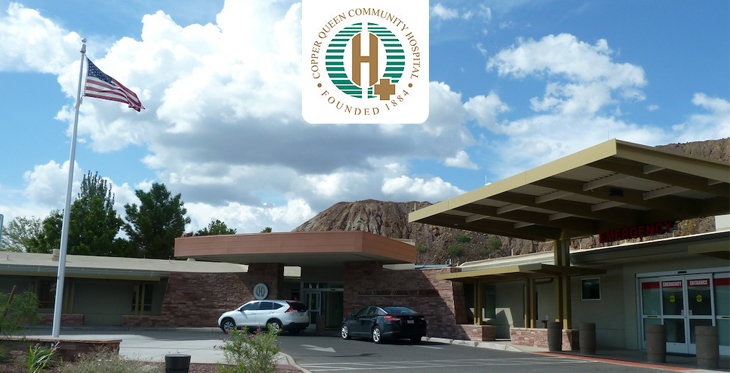At a time when small rural hospitals are increasingly closing their doors, Bisbee’s Copper Queen Community Hospital is bucking the trend.
One can point to a number of reasons why the 14-bed critical access hospital, 10 miles north of the Arizona-Mexico border, is able to maintain a healthy bottom line. One reason is Copper Queen’s robust use of telemedicine.
It started with telestroke, in collaboration with the Mayo Clinic – Phoenix. Former Bisbee Mayor Jack Porter says Copper Queen’s telestroke service enabled him to walk within a few hours of a paralyzing ischemic event. “I didn’t have a stroke,” Mr. Porter tells people. “I had a stroke of luck.”
In a small town like Bisbee – population about 5,400 – word gets around. Marketing 101.
The benefits of telemedicine were obvious to Copper Queen CEO Jim Dickson, and over the last few years the hospital has added telecardiology, teleneurology, teleconcussion, teleburn and telepediatrics, and Mr. Dickson is “now looking at teleorthopaedics.”
“We’re becoming a virtual hospital in the specialty levels of medicine,” he declares.
And it’s paying off.
“With telecardiology, in six months, we saved over $1.4 million in transportation fees, by not having to ship people with atrial fib to Tucson and Phoenix.
“And just in the last two years, we’ve had enough broadband to do telemedicine in our three clinics. I can tell you that we’re the first hospital in the United States to use telecardiology in our ER, in med-surg and in our clinics.”
Neurology and teleconcussion are additional services for which Copper Queen partners with Mayo Clinic – Phoenix. Teleconcussion includes baseline studies of high school athletes, cheerleaders, and other contact sports players, so if a kid gets hit in the head, the new scan can be compared with the baseline to see if there’s a concussion.”
Copper Queen also is scoring well on patient satisfaction – it was a remarkable 90 percent among ER patients last year – and Mr. Dickson believes telemedicine is again part of the equation.
“We initially thought that a television would create a barrier, a not-so-caring environment,” he says. “But it’s not true. When the doctor comes on, the patient is just so happy to have a specialist like that in a small hospital.
“What you have to do is develop your hospital’s culture so that staff accept the addition of telemedicine to your delivery system.”
Dan Derksen, MD, director of the Center for Rural Health in the University of Arizona’s Mel and Enid Zuckerman College of Public Health, keeps a close eye on rural hospital data. One striking example: the National Rural Health Association counted 48 rural hospital closures since 2010 – with 31 of those closures occurring over the last two years.
In Arizona, the 70-bed Hualapai Mountain Medical Center in Kingman closed in September 2011, but has been bought by Kingman Regional Medical Center for use as an acute rehabilitation unit. And Florence Community Healthcare, with 25 beds, closed in June 2012.
“Jim Dickson is incredibly creative, including his success in creating linkages to telemedicine, to make sure health care stays in his community as much as possible,” Dr. Derksen says. “Another thing Jim has done as well as anyone is to expand his revenue portfolio by establishing his three primary care clinics, along with ancillary services like lab and X-ray.
Arizona’s Legislature voted to reduce hospital payments from the state’s Medicaid program – the Arizona Health Care Cost Containment System, or AHCCCS – by 5 percent this year. Some legislators also are considering lowering eligibility for AHCCCS from 100 percent to 33 percent of federal poverty level.
The nation’s hospitals will take another hit if the U.S. Supreme Court sides with the plaintiffs in a pending case that questions the legality of the subsidies paid to the 8.7 million Americans who signed up for coverage from the Affordable Care Act in the 34 states, including Arizona, with federal marketplace “exchanges.” Those buying coverage in state-run exchanges would not be affected. The Obama administration says the subsidies are needed to make coverage more affordable for low- and middle-income families. The Court is expected to decide the case in June.
“The storm clouds are looming,” Dr. Derksen says. “But Copper Queen is doing well. They keep track of patient satisfaction and quality. They are respected and dedicated to making sure that the services their community needs are there.”

